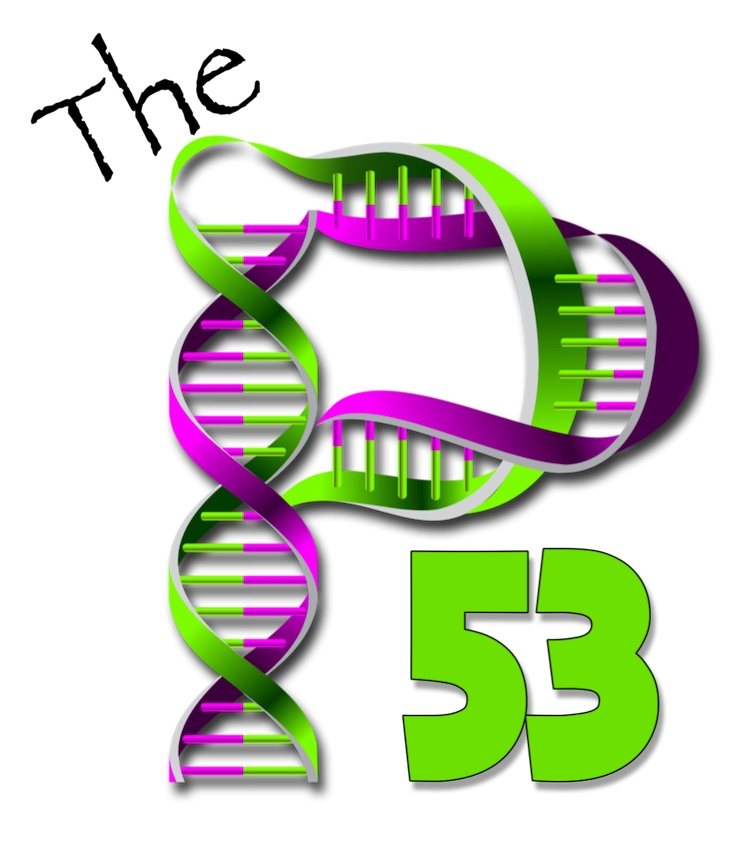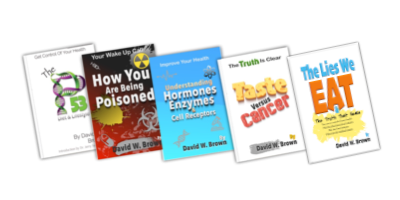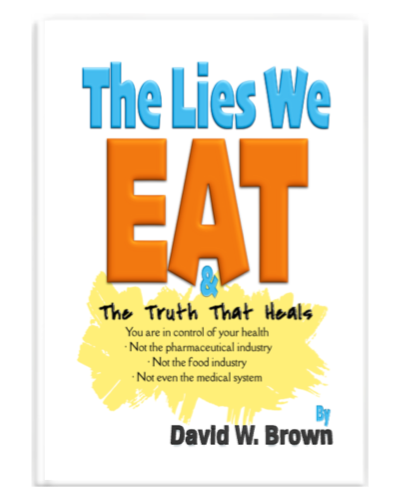Click On A Book For More Information!
How My Books Were Designed to Work Together
When I set out to write my series of books, I didn’t want to create isolated pieces of information that sat on a shelf without context. My goal was to build a comprehensive health system—a package of knowledge, tools, and strategies that could guide anyone, at any stage of life, toward real healing and long-lasting wellness. Each book I’ve written addresses a specific dimension of health, but together, they form an interlocking framework: a package that covers the root causes of disease, the pathways to reversal, and the lifestyle foundations that make health sustainable.
This was never about writing “just another health book.” It was about designing an integrated curriculum for life, one that could empower people with both science and practical application.
The Foundation: The P53 Diet & Lifestyle
Every package needs a foundation, and mine begins with The P53 Diet & Lifestyle. This book is the cornerstone because it explains how food and lifestyle interact with the P53 protein, often referred to as the “guardian of the genome.” By exploring how nutrition directly influences this central defender against cancer, the book shows readers that diet is not simply about calories—it is about genetic protection, cellular repair, and disease prevention.
In this volume, readers are introduced to the plant-based framework that underlies all of my work. They learn how whole foods—fruits, vegetables, legumes, nuts, seeds, and grains—work in synergy with lifestyle choices like exercise, stress reduction, and sleep to strengthen the body’s natural defenses. It’s the opening doorway, the “why” behind everything else, and it lays down principles that ripple through the rest of the series.
Revealing the Hidden Enemy: How You Are Being Poisoned
If The P53 Diet & Lifestyle shows what supports health, How You Are Being Poisoned exposes what destroys it. This book shines a light on the toxins and chemicals that infiltrate our modern lives—pesticides in food, pollutants in air and water, additives in processed products, and even pharmaceuticals that deplete essential nutrients.
I designed this book to function as the “detox lens” in the package. Without it, readers might not understand why they continue to struggle with illness despite eating better. It explains the sabotage happening behind the scenes and gives people the power to reduce their toxic load. By linking environmental exposure to chronic disease, it adds urgency to the dietary changes outlined in the first book. It moves the package beyond food alone and into the broader environment of human health.
Understanding the Body’s Signals: Understanding Hormones, Enzymes & Cell Receptors
Once people understand what strengthens health and what weakens it, the next step is to decode how the body communicates internally. That’s the purpose of Understanding Hormones, Enzymes & Cell Receptors. This book explains the complex signaling systems that direct growth, healing, metabolism, immunity, and energy.
I included this book in the package because without understanding these pathways, people cannot fully grasp why certain foods or toxins produce the effects they do. This is where science and empowerment meet. Readers discover that hormones aren’t just about reproduction—they regulate mood, metabolism, and even cancer growth. Enzymes aren’t obscure chemicals—they are the machinery of digestion and detoxification. Cell receptors aren’t abstract biology—they are the literal doors through which healing or harm enters the body.
Together, this volume provides the “how” behind the principles of the first two books. It empowers readers to see their body not as a mystery but as a finely tuned system responding to every input they provide.
Confronting Disease Directly: Taste Versus Cancer
With the foundations of diet, toxins, and signaling in place, Taste Versus Cancer brings the package into the urgent reality of disease. This book confronts one of the most feared diagnoses in the modern world—cancer—and shows how food choices directly influence its growth or reversal.
Many people continue eating foods that fuel cancer even after diagnosis, often out of habit or cultural conditioning. This book was designed to shake that illusion apart. It reveals which foods are carcinogenic, which are protective, and why taste must be retrained to align with survival. By highlighting real biochemical pathways—how certain foods fuel angiogenesis or inflammation, while others activate apoptosis and immune surveillance—it bridges the gap between daily habits and life-or-death outcomes.
Placed in the package, this book is the “crisis response manual.” It’s for readers facing illness now or fearing it in the future. It makes the package relevant not just for prevention but also for intervention.
Exposing the Myths: The Lies We Eat: The Truth That Heals
The most recent addition, The Lies We Eat: The Truth That Heals, ties the package together by dismantling the cultural myths that keep people trapped in unhealthy cycles. My earlier books are science-heavy, but this one was written as a more accessible, myth-busting guide. It targets the mental and social barriers—the deeply ingrained beliefs that “meat builds strength,” “milk builds bones,” or “processed food is harmless.”
Without this piece, the package would still be incomplete, because knowledge alone doesn’t change behavior. People must also overcome misinformation and cultural programming. The Lies We Eat: The Truth That Heals clears away the confusion, offers a shorter entry point for readers who may be overwhelmed by technical science, and positions the P53 Diet framework as not only correct but practical and achievable.
It is the “gateway” book of the package, inviting more people into the system of health and encouraging them to dig deeper into the earlier volumes.
Why They Form a Full Package
When viewed individually, each book seems to focus on a single topic—diet, toxins, hormones, cancer, or cultural myths. But together, they cover the full spectrum of human health:
- Prevention (The P53 Diet & Lifestyle)
- Detoxification and defense (How You Are Being Poisoned)
- Mechanisms and understanding (Understanding Hormones, Enzymes & Cell Receptors)
- Disease reversal (Taste Versus Cancer)
- Mindset and culture shift (The Lies We Eat)
This structure was intentional. A package must be complete, and these five dimensions ensure no major area is left unaddressed. Readers can enter from any point depending on their needs, but the books connect like puzzle pieces into a coherent health strategy.
Beyond Books: The Larger Health Ecosystem
The package extends beyond the printed word. Together, these books laid the groundwork for the P53 University, the P53 Food Carts. The written knowledge fuels practical action: education, accessible plant-based meals, and nutrient data that empower real-world choices. In that sense, the books are not just a package themselves—they are the blueprint for a larger health movement.
A System of Healing
Health is not built on one idea, one diet, or one book. It requires a system. That is why I designed my books as a complete package. They teach not just what to eat, but why to eat it, how the body responds, how toxins interfere, how diseases develop, and how cultural lies perpetuate illness.
The package is both preventative and restorative, practical and scientific, accessible yet deeply researched. It is designed so that no matter where a reader begins—whether they are newly curious, actively sick, or simply searching for truth—they will find a path that leads to greater understanding, greater empowerment, and greater health.
In short, these books were not written in isolation. They were crafted as chapters in one larger story: the story of reclaiming health through truth, science, and the P53 way of life.







